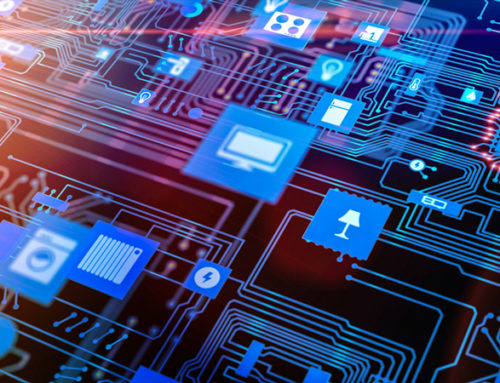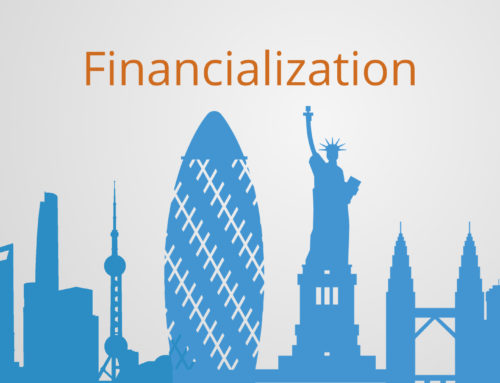Towards a Network Society
In the past few decades, information technology has networked our world, a world that was in many ways defined and held together by its borders and boundaries. Boundaries to countries, boundaries to organizations, boundaries to ourselves are all being radically disrupted by the omnipresence of connectivity as it drives convergence. Today the very nature of technology is itself changing, in its pervasiveness, in its degree of interconnectivity, in its proximity, in speed and scale. These boundaries that were once fixed, that allowed us to interpret and give structure to our world, are through hyperconnectivity becoming eroded and fuzzy. Building conceptual interpretations for this brave new world of convergence, a world without borders, is something we have yet to achieve. As we do the same reoccurring tensions and contrasts between the martial world of space, place, and boundaries and the dematerialized world of hyperconnectivity and convergence continue to play out through a plurality of different themes.
“A whole lot of new issues are happening in the world, and opportunities that go with those issues, around increase in connectivity due to digitalization, so the more we connect, the more interconnected we become and the more interdependent we become, and those interdependencies and interconnections create a lot of new challenges that we never thought about before… you start to see some very new kinds of challenges that some of the mechanisms and processes we have in the world don’t solve” – Alan Marcus WEF
A New Kind of Space
Space, that is in many ways the primary categorization through which we interpret and give meaning to our world, has been the ultimate victim of networking technologies. A good example of this is the skyscraper, this design to a building would not be practical without telecommunication, and it is only with telecommunications that we can condense so many people into such a confined location. In such a way space becomes compressed and it is this compressing of space that is the practical enabler of globalization, without telecommunication the idea of a single global community would not be a practical possibility in the way that it is. Because of hyperconnectivity space becomes distorted, a virus like SARS doesn’t just spread in a linear fashion from one location to its next geographical neighbor and to the next and so on, but in fact because of heightened connectivity in global air transportation it starts in rural China and within a few days it is in Canada and Ireland, before it reaches other parts of China. Previously relations like this were primarily defined by a geographic physical space, but with hyperconnectivity, these relations become decoupled from the categories of space, as connectivity creates its own space. This is what the sociologist Manuel Castells calls the “space of flow“ which are spaces like global cities that have become decoupled from their local geographical context and defined by their access to global networks, a new type of space that allows distant synchronous, real-time interaction.
As we increasingly extract information from materiality decoupling the two, information increasingly has its own space independent from a physical geographical space. Previously information was bound in some form, whether a book, cassette or picture, the digital revolution has abstracted information from all these physical forms and created a new kind of space, sometimes called cyberspace, a dematerialized space of connectivity. With the rise of networks, space becomes defined by connectivity, it becomes a function of being inside of a network or outside of it and thus it becomes dematerialized. It is no longer a question of how close or far you are physically from something but instead how connected you are, space and time get compressed and become homogeneous.
“The space of flows . . . links up distant locales around shared functions and meanings on the basis of electronic circuits and fast transportation corridors, while isolating and subduing the logic of experience embodied in the space of places”
– Manuel Castells
A Future Without Secrets
The next generation of pervasive networked technologies drives convergence not just in space but also on a much more intimate level, between the subjective and objective, between the public and private domains, between technology and our body, categories that we once thought to be fixed and coherent ways to understand our world. Connectivity creates objectivity, it is in connecting that something subjective becomes projected into an objective form, through communications what is internal becomes external. The prefix “hyper-“ implies an extreme or an excess of something and the risk of pervasive connectivity is the risk of an imbalance between the subjective and objective. Subjectivity means based upon a personal feeling or opinion, to quote the Oxford Dictionary “dependent on the mind or on an individual’s perception for its existence”. Subjectivity is the sense of oneself as unique and distinct from everything else. As such it is the source of diversity of opinions and ideas, it is only out of people’s subjective experience that we get new and different ideas, that we turn our experiences into ideas and it is only by people having different and unique experiences that we can get new and different ideas.
But if subjectivity creates uniqueness and diversity, connectivity and objectivity drive homogeneity; creating a connection requires some kind of similarity or common platform for two things to connect through, sharing the same language is an example, without this commonality it is not possible to connect with other people through communications. The more we are brought into contact the more we are forced to create and share common interfaces, with hyperconnectivity the threat is that these commonalities come to subsume the diversity of difference. Hyperconnectivity also breaks the process of subjective development in that it allows us to “escape“ from ourselves; developing valuable insight, new ideas, one’s own opinion all take time, reflection and most of all attention. Heightened connectivity gives us the opportunity to continuously break this process as attention becomes scattered and fractured, without a focus of attention there is no experience of the self, and when attention is always on something objective then there is no space for subjective development.
Whereas technology is seen to be objective in that it is created through design, our bodies are not, they are part of the unique experience of being us, after all, it is us who feels them and not someone else, the experience would appear to be inherently subjective. But the next generation of pervasive technologies breaks down this barrier, with the next generation of bio and cognitive technologies we have the capacity to ”not be us”, to alter or re-engineer basic biological and cognitive processes, to make them explicit, to share them with the resulting homogeneity that follows from this. Hyperconnectivity challenges us like never before to understand this divide between the subjective and objective, the value of subjectivity in creating novelty, innovation, and diversity. Most of all it challenges us to understand the process through which the two can be successfully integrated to create synergies.
Systemic Risks
Telecommunication is stripping down cultural borders bringing us into contact with people around the world, homogenizing culture and forcing us to question our differences. To really question what makes us different when there are no borders to protect this difference, and raising the question of how without these supports new patterns of organization and new ideas can be fostered? Communications is the means through which different things, people, and technology can become synchronized into a similar state; each new wave of telecommunications gives us a new capacity to synchronize our activities. The primordial form of communications technology, written text, enabled the formation and maintenance of early empires some four or five thousand years ago, it allowed for the coordination of people’s activities over a large geographical area. Modern broadcast media enabled the nation state; if we think about it something like the fascist state would have been impossible without mass media, coordinating so many people in real-time towards a common end required the use of telephone and radio.
Telecommunications give us this capacity to synchronize our states and coordinate our activities; the technologies of the digital revolution give us this capacity on an unprecedented scale and at an unprecedented speed. This is both a huge opportunity and a huge risk, a huge opportunity to create a truly global society, break down divides and for people to recognize their commonalities and interdependencies. The Internet has shown us that we now have the tools and capacity to self-organize around ideas and issues that matter to all of humanity and act upon this, the Joseph Kony case being a good example of this. But it is also a huge risk, the Nazi state showed us how industrial technologies could be used to malicious ends, how the new-found communications medium and bureaucratic system of organization could be used to coordinate millions of people towards destructive ends, have we learned the lessons from this? Hyperconnectivity means we can be coordinated on a global basis within just minutes, hours or days, this has the capacity to move us all in the same direction very quickly, without a diversity of perspectives to offer a rounded appraisal of this and to counter balance hyperconnectivity, it creates systemic risks.
“Hyper connectivity is going to be for the 21st century what the internal combustion engine was for the
twentieth”– Robert Greenhill
The Breakdown of Reductionism
Telecommunication is stripping down cultural borders bringing us into contact with people around the world, homogenizing culture and forcing us to question our differences. To really question what makes us different when there are no borders to protect this difference, and raising the question of how without these supports new patterns of organization and new ideas can be fostered? Communications is the means through which different things, people, and technology can become synchronized into a similar state; each new wave of telecommunications gives us a new capacity to synchronize our activities. The primordial form of communications technology, written text, enabled the formation and maintenance of early empires some four or five thousand years ago, it allowed for the coordination of people’s activities over a large geographical area. Modern broadcast media enabled the nation state; if we think about it something like the fascist state would have been impossible without mass media, coordinating so many people in real-time towards a common end required the use of telephone and radio.
Telecommunications give us this capacity to synchronize our states and coordinate our activities; the technologies of the digital revolution give us this capacity on an unprecedented scale and at an unprecedented speed. This is both a huge opportunity and a huge risk, a huge opportunity to create a truly global society, break down divides and for people to recognize their commonalities and interdependencies. The Internet has shown us that we now have the tools and capacity to self-organize around ideas and issues that matter to all of humanity and act upon this, the Joseph Kony case being a good example of this. But it is also a huge risk, the Nazi state showed us how industrial technologies could be used to malicious ends, how the new-found communications medium and bureaucratic system of organization could be used to coordinate millions of people towards destructive ends, have we learned the lessons from this? Hyperconnectivity means we can be coordinated on a global basis within just minutes, hours or days, this has the capacity to move us all in the same direction very quickly, without a diversity of perspectives to offer a rounded appraisal of this and to counterbalance hyperconnectivity, it creates systemic risks.
Hyperconnectivity challenges us to find a new structure to our post-industrial world, a world without boundaries and boarders; to try and understand what really makes things different and how these differences fit together in enabling a new process oriented world. The real question is then, how to make connectivity work, how to build a process-orientated world that somehow makes all of these connected things and people greater than the sum of its parts





